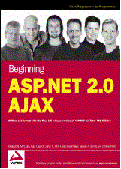Development Trends
If you have been developing for a while, like us old guys, you have gone through
several iterations of development — from terminals connected to mainframes and
mini-computers to personal computers and then to client-server development.
Client-server development allowed for the minimization of back-end resources,
network resources, and the front-end PC by sending only the necessary data
between back end and front end. Intelligent client-server development allowed
for building applications that were responsive to the user and made efficient
use of network and backend resources. As the web development methodology took
off in the late 1990s, we unfortunately returned to the terminal-style
development. In this methodology, any major operation between the client and
server requires that all data be sent in what is called a round trip. With a
round trip, all data from the form is sent from the client to the web server.
The web server processes data and then sends it back to the client. The result
of a round trip is that a lot of data is sent back and forth between the client
and server. Given the circumstances, these operations may result in more data
transfer and CPU utilization than a web application and server can really
tolerate.
ASP.NET Development
ASP.NET is a set of web development technologies produced by Microsoft that is
used to build dynamic web sites, web applications, and XML-based web
applications. ASP.NET is a part of the .NET framework and allows for developers
to build applications in multiple languages, such as Visual Basic .NET, JScript
.NET, and C#.
|

Book Excerpt: Introduction to ASP.NET AJAX
Chapter Contents
This excerpt from
Beginning ASP.NET 2.0 AJAX by Wallace B. McClure, Paul Glavich,
Steve C. Orr, Craig Shoemaker, Steven A. Smith, Jim Zimmerman, is printed with
permission from Wrox Publication.
|
Design Methodology
ASP.NET attempts to make the web development methodology like the GUI
development methodology by allowing developers to build pages made up of
controls similar to a GUI. Server controls in ASP.NET function similarly to GUI
controls in other environments. Buttons, text boxes, labels, and datagrids have
properties that can be modified and expose events that may be processed. The
ASP.NET server controls know how to display their content in an HTML page just
like GUI-based user controls know how to display themselves in their GUI
environment. An added benefit of ASP.NET is that the properties and methods of
the web server controls are similar, and in some cases the same as the
comparable controls in the Windows GUI/Windows Forms environment.
Page
1 | page
2 | page
3 |
page 4 |
page 5 |
page 6 |
page 7 |
page 8
Also read
ASP.NET 2.0 AJAX is an AJAX-oriented .NET library that runs on .NET 2.0. Though
ASP.NET 2.0 AJAX is an AJAX library and can be used to perform AJAX operations,
it is really much more. ASP.NET 2.0 AJAX offers many of the same types of
features of the server-side ASP.NET............
The packaging of ASP.NET 2.0 AJAX can be fairly confusing. The basics of the
packaging are................
AJAX offers benefits to both end users and developers. For end users, it reduces
the “rich or reach” conflict; for developers, it helps in overcoming the
constraints raised by HTTP.............
ASP.NET AJAX is the name of Microsoft’s AJAX solution, and it refers to a set of
client and server technologies that focus on improving web development with
Visual Studio. Other companies have their own AJAX solution, often taking a
radically different approach..........
REST means Representational State Transfer, an architectural pattern used to
identify and fetch resources from networked systems such as the World Wide Web
(WWW). The REST architecture was the foundation of World Wide Web. But the term
itself came into being around the year 2000, and is quite a buzzword these
days...........
The ASP.NET MVC framework was released by Microsoft as an alternative approach
to web forms when creating ASP.NET based web applications...........
|